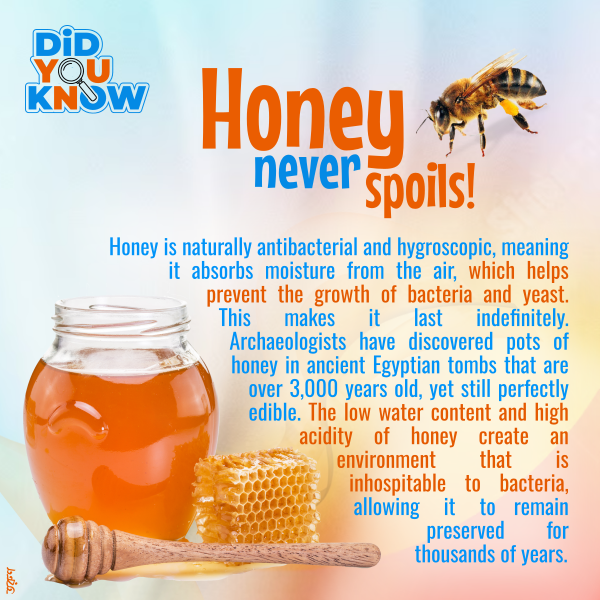

A Sweet Treat That Lasts Forever
Honey’s ability to remain edible for thousands of years is truly remarkable. With high acidity, low moisture, and a hygroscopic nature that draws in moisture from the air, honey creates an environment where bacteria struggle to survive. Incredibly, archaeologists have discovered 3,000-year-old honey in Egyptian tombs that’s still safe to eat! This timeless quality makes honey one of nature’s most fascinating food sources.
What Makes Honey So Special?
Honey’s natural antibacterial and healing properties give it more than just a delicious purpose. Not only does it resist spoilage, but it also promotes wound healing, making it an ancient—and modern—remedy. When bees produce honey, they combine nectar with enzymes from their bodies, creating a substance that doesn’t need preservatives to stay fresh.
Honey’s Versatility Through the Ages
Historically, honey wasn’t just a sweetener—it was a prized medicinal and cultural treasure. Ancient civilizations used it in religious ceremonies, medicinal salves, and as a beauty enhancer. Today, honey continues to be valued for its antioxidants, health benefits, and diverse applications, from culinary to skincare.
Fun Facts
- Honey was a staple in ancient medicine, valued for its role in treating wounds and preventing infections.
- Different flowers give honey distinct flavors and colors, resulting in a wide variety of honey types, from clover to manuka.
- Raw honey is packed with antioxidants, promoting heart health and immune support.
Curious About More Natural Wonders?
Discover more awe-inspiring facts in our “Nature’s Marvels” category!

We choose not to clutter your experience with ads. If you’d like to support us, consider showing some love by liking this post on X (Twitter) or on Instagram!
Share this Post, Spread the Knowledge!

Very good information.